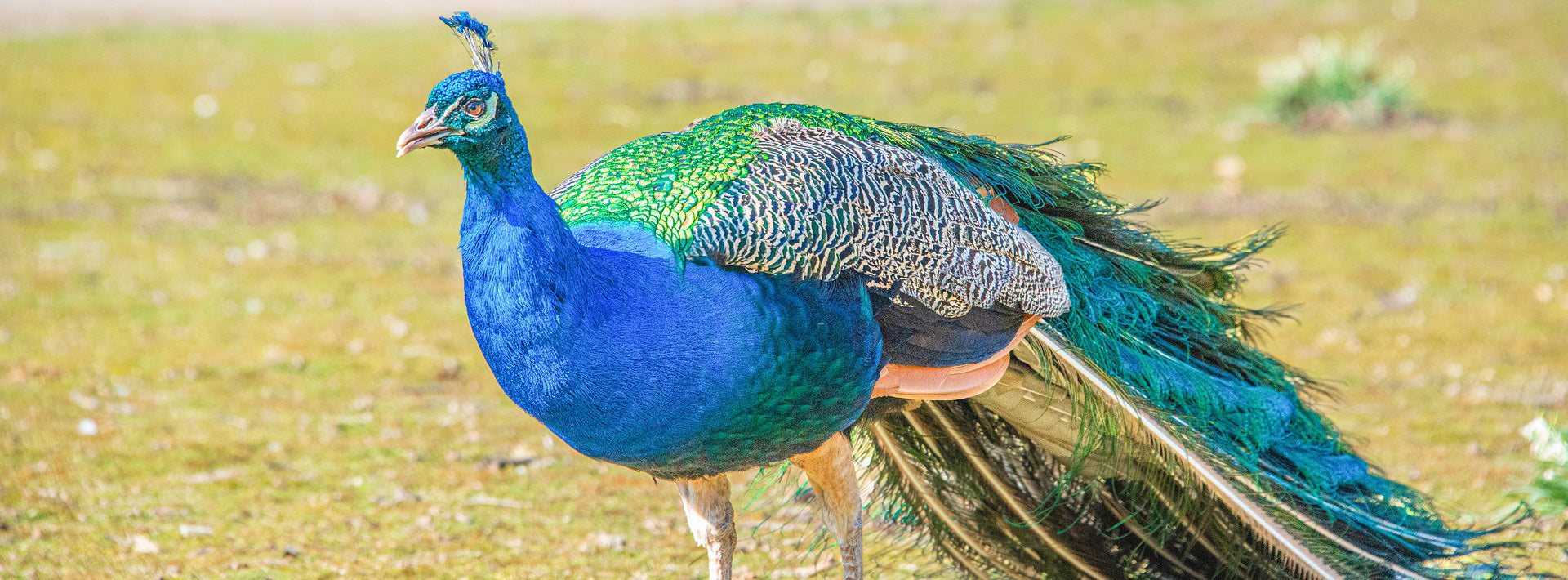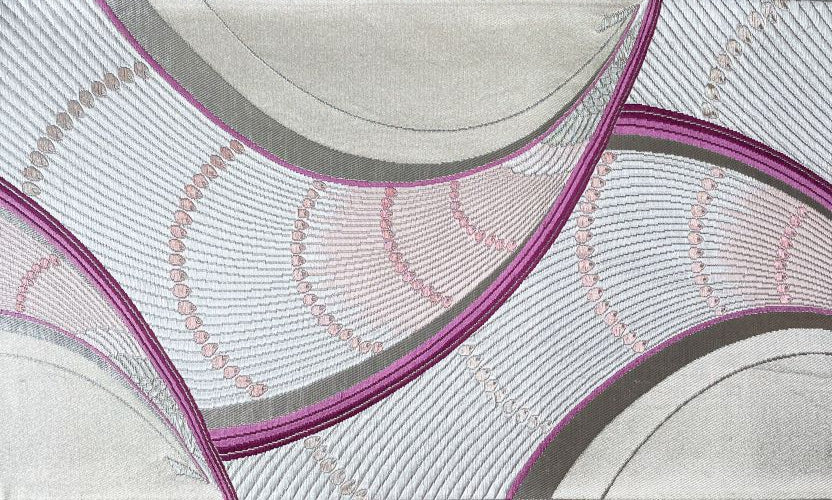孔雀 -Peacock-
古代中国では、九徳をそなえるめでたい鳥として牡丹とともに描かれた孔雀。奈良時代に日本に伝わり、平安時代になると鳳凰にたとえられ、長く美しい尾羽を広げる姿が文様として描かれるようになりました。現代では礼装用の留袖や訪問着、袋帯などに多く用いられます。
In ancient China, the auspicious peacock, often depicted alongside peonies, symbolized nine virtues. It was introduced to Japan during the Nara period and, by the Heian period, started being likened to the phoenix. The motif of the peacock displaying its long and beautiful tail feathers became a popular pattern. In contemporary times, it is frequently used in formal Japanese attire such as "furisode" (long-sleeved kimono for young unmarried women), "hōmongi" (semi-formal kimono for visits), and "fukuro obi" (obi for formal occasions).


